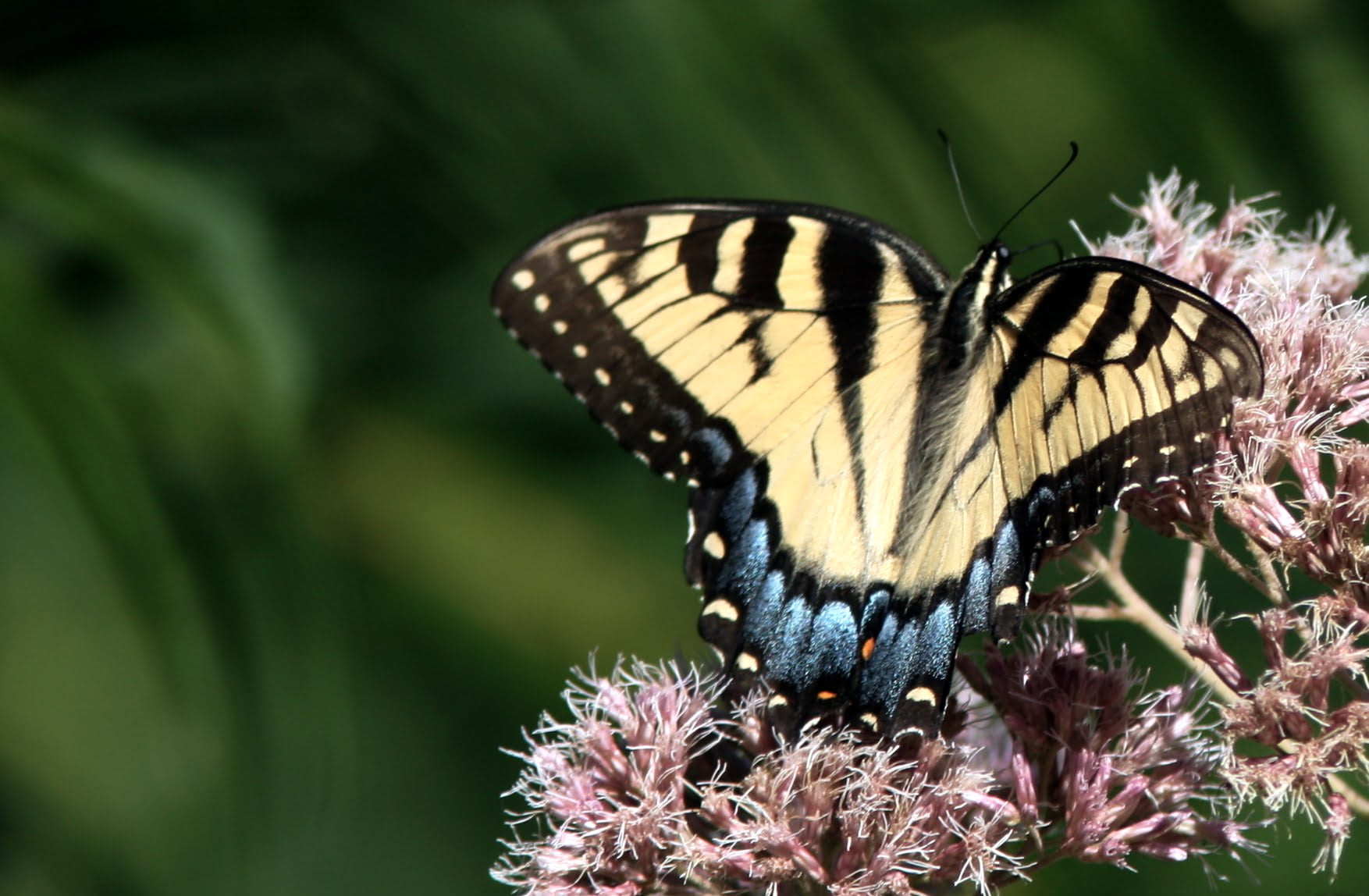The Eastern Tiger Swallowtail (Papilio glaucus) and the Eastern Giant Swallowtail (Papilio cresphontes) are two distinct butterfly species that are difficult to identify but can be differentiated by several features. Here are some key differences:
Size
The Giant Swallowtail is usually larger than the Eastern Tiger Swallowtail. The wingspan of the Giant Swallowtail can reach up to 4 to 6 inches (10 to 15 cm), while the Eastern Tiger Swallowtail typically has a wingspan of around 3.5 to 5.5 inches (9 to 14 cm). Of course, some Tiger Swallowtails will be larger than some Giant Swallowtails, so this is not conclusive.
Coloration
Both species exhibit sexual dimorphism, meaning males and females have different appearances. In the Eastern Tiger Swallowtail, the males have bright yellow wings with four black stripes, while the females can have either yellow or black color morphs. The black morph females have blue patches near the base of their hindwings (but look a lot like Spicebush Swallowtails).
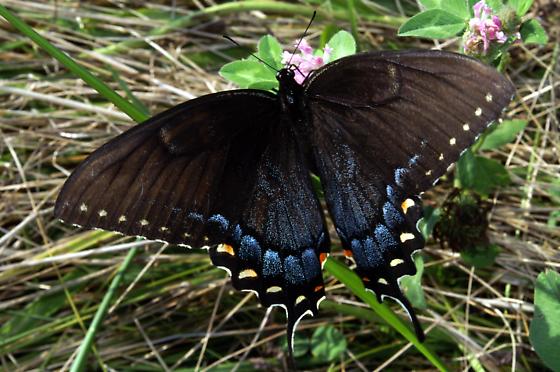
The Eastern Giant Swallowtail males are predominantly black, with yellow bands and spots on the wings. The females have more extensive yellow areas on their wings.
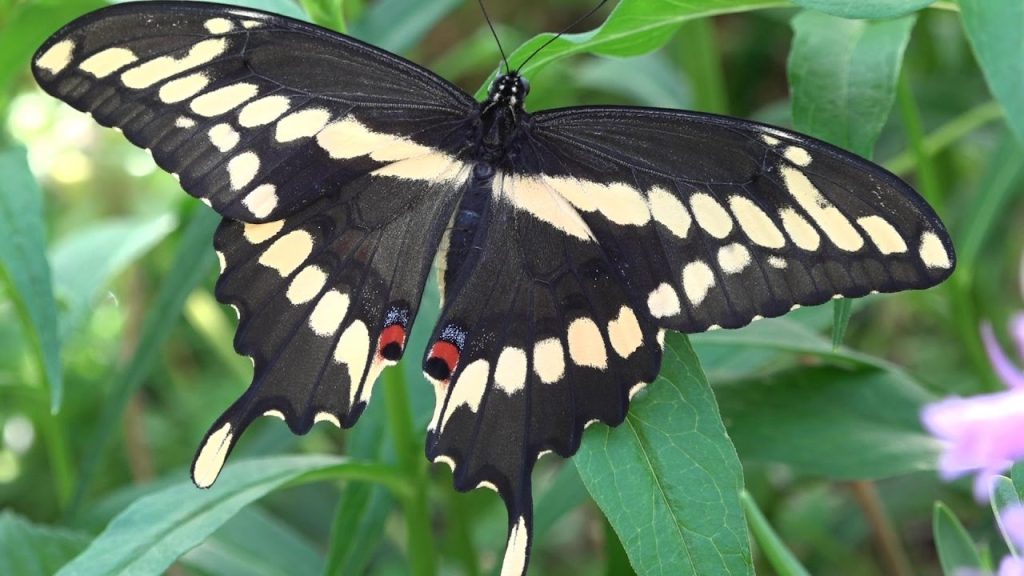
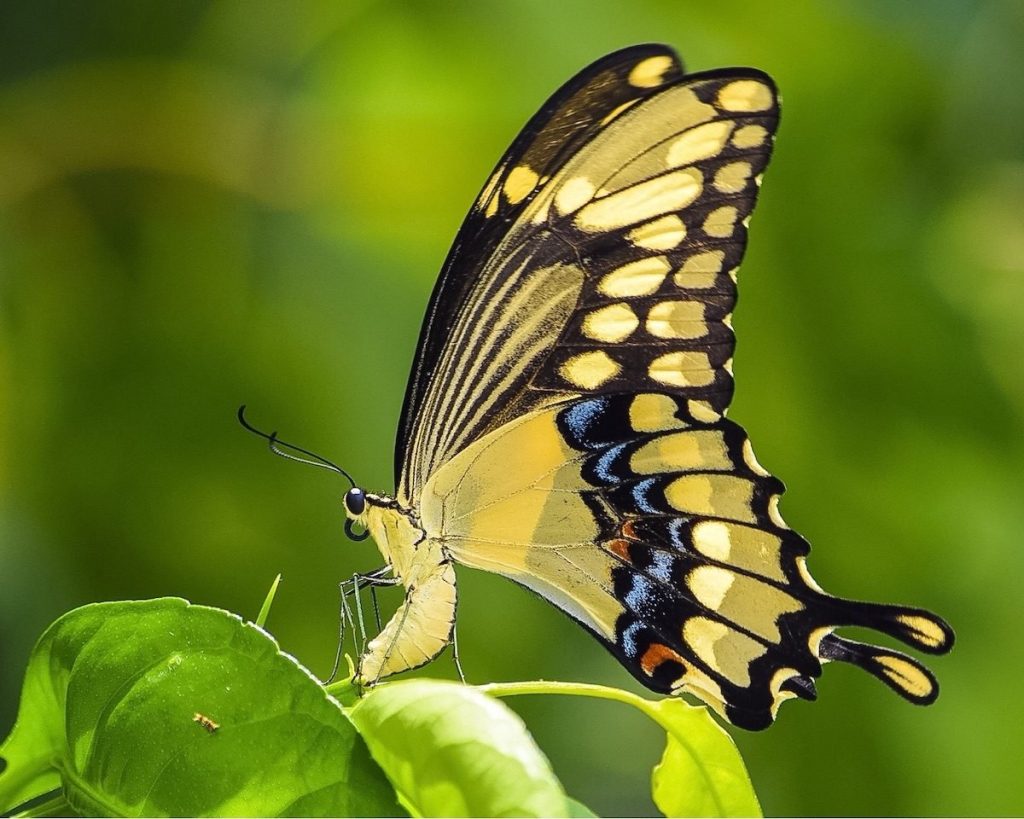
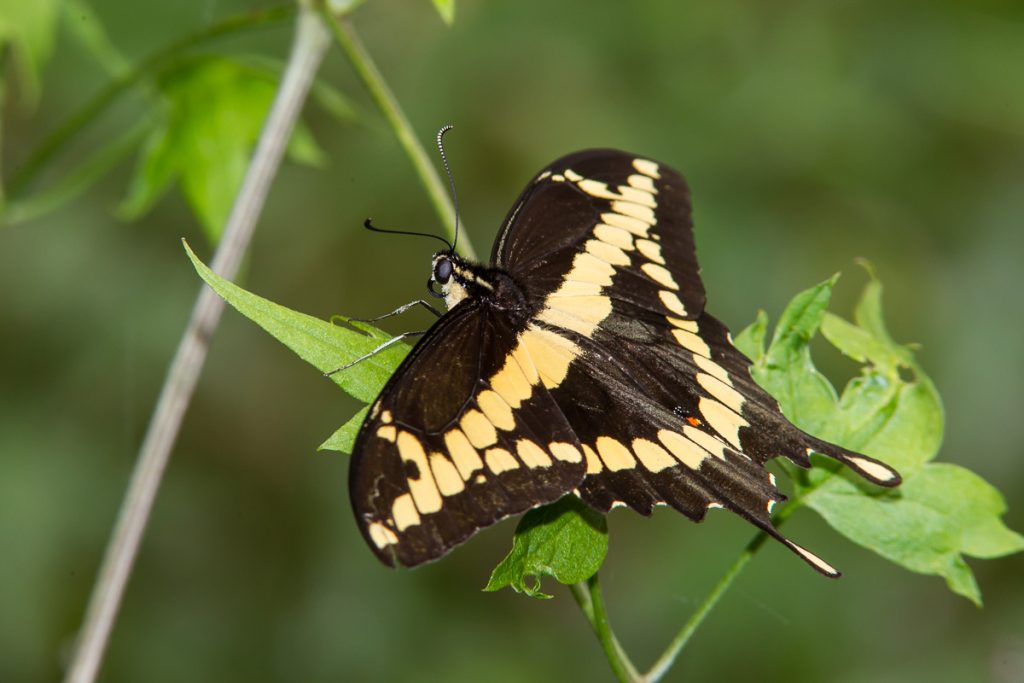
Larval Host Plant
These two butterflies have different Larval Host Plants. If you see a female landing briefly on trees or shrubs, these plants might help identify the butterfly.
The Larval Host Plant for an Eastern Giant Swallowtail is any kind of citrus, so if you are near citrus trees, you might be looking at a Giant Swallowtail. Whereas the Larval Host Plant for Eastern Tiger Swallowtails are Magnolia and Tulip trees, so having these kinds of trees around might mean you see a Tiger Swallowtail. Of course with both around, this is not as helpful.
Witnessing a butterfly lay an egg on its larval host plant, however, is a very strong method of butterfly identification. Monarch Butterflies, in comparison, will only lay eggs on Milkweed plants of the genus Asclepias.
Markings and Patterns
While both species have black stripes on their wings, the pattern and arrangement of these stripes differ. The Eastern Tiger Swallowtail has four black tiger stripes on its forewings, with the uppermost stripe extending onto the hindwing.

The Giant Swallowtail has more irregular black bands and spots on its wings.
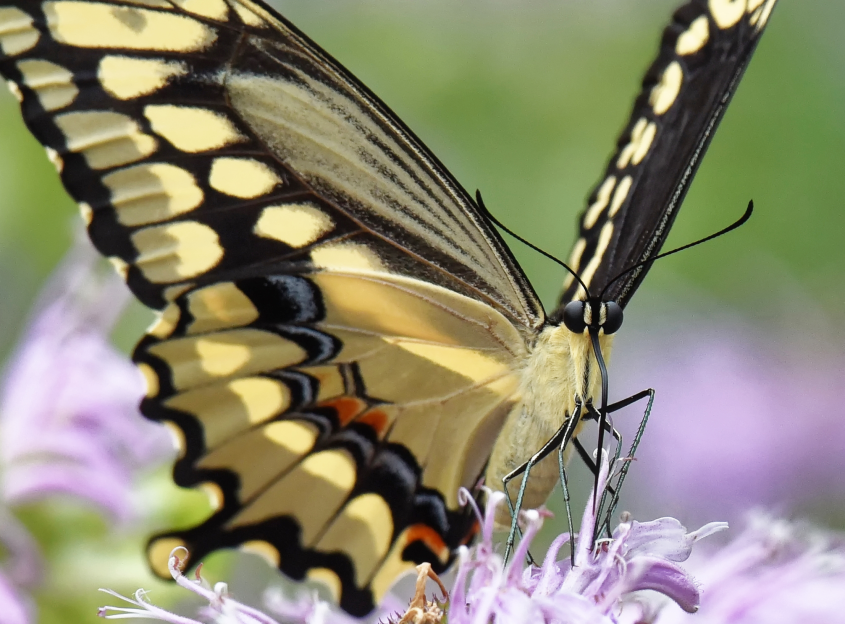
Hindwing Tails
One of the most distinguishing features of the Eastern Tiger Swallowtail is the presence of long, thin tails on its hindwings. These tails are wider and shorter in the Giant Swallowtail.
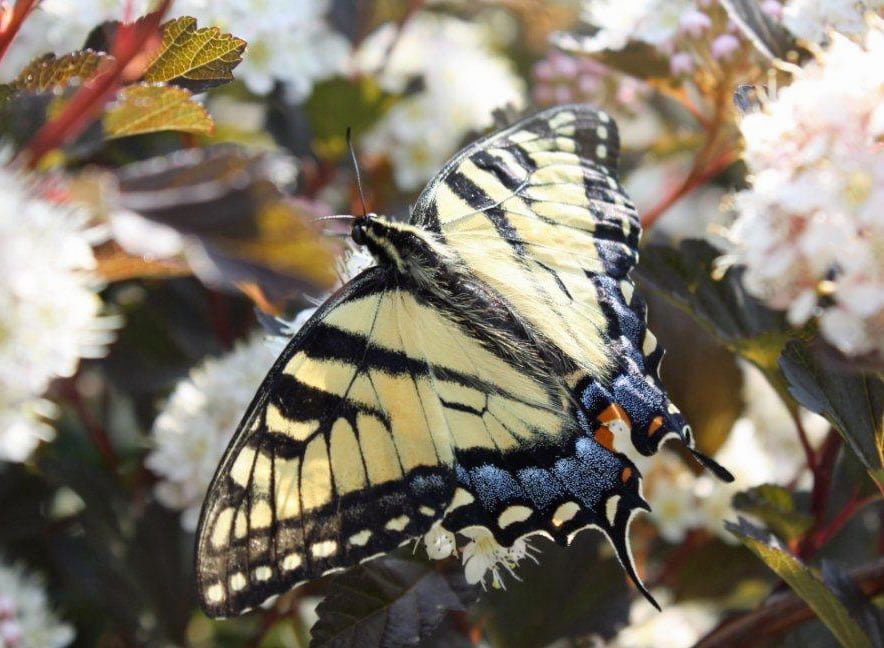

The Adventures of Johnny Butterflyseed – Author Signed First Edition Children’s Book
Save the monarchs!
Johnny Butterflyseed and his fairy friend, Raven Silverwing, embark on a mission to save the rapidly disappearing butterflies. They enlist the help of Queen Venus Goldwing and her kingdom of monarchs to educate and inspire kids to become butterfly farmers. At first, Johnny faces his own internal struggle with self-doubt and fear in his ability to make a difference, but then soon develops a mindset that allows him to not only get started, but also make progress one day at a time. Through challenge after challenge, Johnny learns that he is not alone in his mission and that there are many people who want to help. Together, Johnny, Raven, and Queen Venus educate thousands of children on becoming butterfly farmers.
It’s worth noting that these descriptions provide general characteristics, and there can be variations within each species. Additionally, the appearance of butterflies can vary geographically and across different subspecies. Consulting field guides or butterfly resources specific to your region can provide more detailed information on the morphological differences between these two species in your area.
While it may be difficult to identify a quickly passing Tiger or Giant Swallowtail, the very fact that we try, or even notice a butterfly passing us at all is amazing. Please learn and do more to help protect these valuable creatures… one day at a time!
